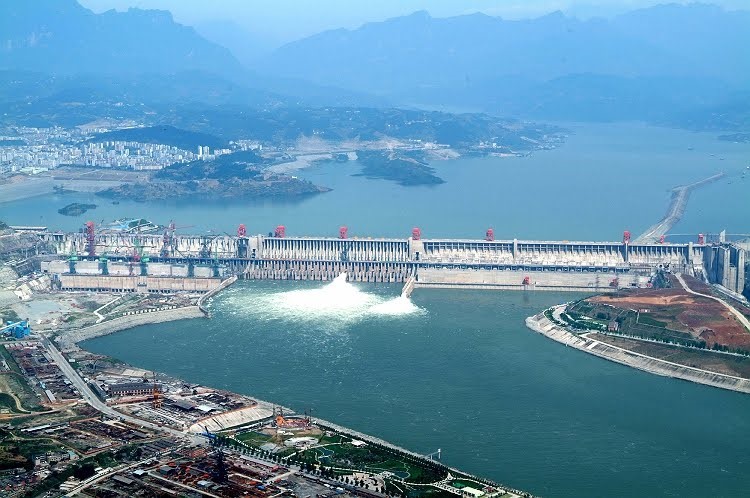 China’s proposed strategic interests behind the building of the run-of-the-river dams along the middle reaches of River Brahmaputra, provides insignificant data over the nature of the project in the future course of time. As the Indian government rests on the Chinese assurance of the unalterable status quo, the Assamese government has raised serious doubts on the Chinese prospects over the watercourse.
China’s proposed strategic interests behind the building of the run-of-the-river dams along the middle reaches of River Brahmaputra, provides insignificant data over the nature of the project in the future course of time. As the Indian government rests on the Chinese assurance of the unalterable status quo, the Assamese government has raised serious doubts on the Chinese prospects over the watercourse.
In this regard, it is time for an establishment such as that of the Brahmaputra River Valley Authority (BRVA) to undertake effective scientific investigation with respect to both the lean flows of the river and the consequences of the dam constructions by the Chinese over the river. This article delves into assessing the potential factors that are leading China into building the multiple dams. It questions China’s proposition vis-à-vis the mounting threats and assesses the establishment of a joint authoritative body to ensure the regulatory flow of the waters, in order to provide a timely scientific data of the cause and effects of the river.
Potential Factors for China's Propaganda
The Brahmaputra River in China (known as Yarlung Tsangpo) has been of significant strategic interest for the Chinese since the 19th century." With an average elevation of about 4000 metres, the river provides for the hydroelectricity power needs of the country. In addition, some areas within China have been experiencing their worst drought in at least 50 years. Therefore, it is believed that by diverting the river system via constructing the proposed dams, the river will provide for the growing needs of the country; prove to be a useful mechanism in flood control methods and serve the waterway navigational purposes of the country.
China upholds the principle of ‘Prior Appropriation', meaning that, as the first users of the river course, it must be granted the right of accessing the river without external interferences. This also marks a geo-strategic advantage for China to enforce its power structure in the South Asian region. For China, the building of the dams is merely a run-of-the-river project that will not hold the water of the lower riparian states. However, China’s growing interests from the 'Tibet Three Gorges Dam', (one of the biggest dams in China) construction on the Pondo Water Control Project in 2008, which is expected to be completed in 2016, coupled with the 60 odd number of dams raises serious environmental and risk concerns for its downstream South Asian counterparts. Comprised of a reservoir and a power station, the projects are designed to irrigate millions of hectares of farmland and generate millions of kilowatt hours of electricity annually.
India's Strategic Move
The recent exchange of state visits over the Brahmaputra discourse by China and India on the sidelines of the BRICS Summit questions the efficacy of the state of affairs, pertaining to a change in the projected plans. While Prime Minister Manmohan Singh raised India’s concerns over Beijing's plans to construct three dams across the Brahmaputra River, President Xi Jinping, as part of the decadal change of power structure in China, maintained that the dams are, merely, run-of-the-river projects and are innocuous.
Since there is no definitive alignment of the nature of the projects merely being run-of-the-river, India’s subsequent course of action should entail restructuring the Brahmaputra Board and replacing it with the Brahmaputra River Valley Authority (BRVA). There is an apprehension being expressed throughout the Asian regime who are demanding to know the quantity of water that the Chinese are planning to divert. Therefore, demanding a bilateral collaborative study between the two countries will help allay these fears. Since no flood mitigation measures are in place, there is an excessive amount of water in the river which is not contained in any reservoir. Further, China holds no water sharing agreement between any of its co-riparian neighbours and is continually propositioning new dam constructions with zero lateral negotiations over the effects of its plans. Considering relations at stake due to China’s disposition, it is essential that the Brahmaputra River Valley Authority, if established, look into the present needs and evolving dynamics pertaining to irrigation, food security, climate change, flood preventive modules, hydroelectricity, ecology, etc. of the sub-regional arena.
Notwithstanding pledges to take the bilateral relationship to a new level with a higher growth trajectory, Prime Minister Manmohan Singh has sought a joint mechanism with China to assess the construction work on dams on the river. This will ensure a steady assessment of the work in progress vis-à-vis foresightedness in dam construction activities and will also safeguard Sino-Indo relations from getting muddled in the long run. By establishing a joint mechanism committee, the Indian government will be able to re-affirm its loose ties with the Northeast. Assam’s vociferous claims to the central government over the issue have pushed the UPA into taking immediate action. However, the onus is still on India for looking at the tripartite aspects of the water-sharing discourse, as regards, its relations with Bangladesh loosely hanging despite weighty political ambitions being raised over the Teesta River. Presently, India needs to act swiftly over the Teesta discourse with Bangladesh whilst pushing for affirmative action over the Brahmaputra River with China in order to maintain a steady balance with its riparian counterparts in the region.
Courtesy : Institute of Peace and Conflict Studies (http://www.ipcs.org)